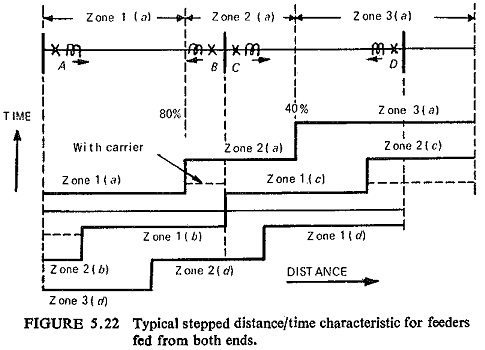Scheme of Distance Protection:
In developing an overall Scheme of Distance Protection, it is necessary to provide a number of relays to obtain the required discrimination. Modern practice is to adopt definite distance method of protection applied in 3 zones (steps).
A number of distance relays are used in association with timing relays so that the power system is divided into a number of zones with varying tripping times associated with each zone.
The first zone tripping which is instantaneous is normally set to 80% of the protected section.
The zone 2 protection with a time delay sufficient for circuit breaker operating time and discriminating time margin covers the remaining 20% portion of the protected section plus 25 to 40% of the next section. Also in the Scheme of Distance Protection the Zone 2 also provides backup protection for the relay in the next section for faults close to the bus.
Zone 3 with still more time delay provides complete backup protection for all faults at all locations.
In practice, the initial pickup of the zone 3 relay may be used as a starter for the equipment, since its own measuring action will take place only after a long time delay.
The three stepped characteristics of a definite distance scheme has already been discussed for feeders fed from one end. Now if fault can be fed from both ends as in the case of an interconnected system, assuming zone 1 to be 80 % of the protected section then there will be 40% of the feeder on which faults will finally be cleared in the zone 2 time. This is clear from Fig. (5.22). This is undesirable from stability point of view and in general it will be necessary to avoid this delay. This is possible if the distance relay which has tripped instantaneously in zone 1 sends an intertrip signal to remote end of the feeder in order to trip the breaker quickly in preference to waiting for zone 2 tripping.
In some distance schemes, carrier acceleration is applied which utilises a carrier signal transmitted over the power line. The combination of the carrier signal and the position of the starting elements of the remote relay cause tripping without further time lag.
